Chevrolet Tahoe Vs Nissan Armada Comparison: Goliath Vs Goliath

The full-size SUV is a very American vehicle. Unsurprisingly, the market is dominated by domestic players, GM being the biggest among them.
The Detroit giant offers the Cadillac Escalade for luxury-minded customers, the GMC Yukon as a premium option, and the Tahoe as the workhorse. For 2021, the Chevrolet Tahoe was completely redone from the ground up and now rides on independent rear suspension and even offers a diesel powertrain. The Tahoe will probably gallop around in the full-size SUV market mostly unchallenged until the Grand Cherokee L and the Grand Wagoneer arrive.
But in the meantime, there exists an option from Japan that commands its own following. The Nissan Armada might not boast of a large following in the Americas despite being built for the North American market, but in the middle east, literally, every third car is a Nissan Armada (or Patrol as it is called there). It is also a capable off-roader, comes with a V8 engine, and offers tons of space. So it ticks all the right full-size SUV boxes. Plus, it gets a comprehensive update for the 2021 model year which includes a new face.
Get a Quote on a New Chevrolet Tahoe or Nissan ArmadaA comprehensive facelift and an evolutionary new product on a new platform, the 2021 Chevrolet Tahoe and the 2021 Nissan Armada are quite different from each other especially in terms of price and play to their own strengths. But which is the ideal overall package?
Styling
Armada: For those who don’t know, underneath, the Nissan Armada is the twin brother of the Nissan Patrol which has been around since 2010 and has remained relatively unchanged since. Being the Patrol’s mechanical twin, the bones and heart of the Armada too, date back to 2010. But, the 2021 facelift, brings the styling up to date and in tune with Nissan’s current design language.
The C-shaped headlamps look futuristic, the black grille and the new Nissan logo give the front an air of elegance despite the generous helping of chrome. A front bashplate looks purposeful and in profile, the Armada looks imposing and oozes road presence even when compared to the Tahoe. The rear though is less impressive. Kyle feels the hatch looks “frumpy, and no amount of restyling can fix the awkward hard points.” Plus the rear bumper protrudes awkwardly like a Habsburg’s jaw.
Tahoe: If you want to define bling in an image, the Tahoe High Country’s front grille makes for the perfect example. There’s more chrome here than the Harley-Davidson factory from the eighties. The front fascia of the Tahoe too looks quite busy because of the gaping grille that spills almost to the edges, the small DRLs and the front bumper with all its design lines and protrusions.
Admittedly, the bronze inserts in the grille and sleek headlamps lend some subtlety to the front design but do little to mask the overall bling of the grille. The chrome wheels too don’t do its aesthetic appeal any favors. Plus, at 22 inches in diameter, they are extremely hard to ignore as well. It does, however, mask its size (relatively) thanks to a reverse-raked C-pillar. The rear though is pretty nondescript to be honest but it is a welcome contrast to the busy front end.
Bottom Line: The Armada’s face is more appealing compared to the Tahoe. But that is only due to the overkill of chrome. If all the chrome bits were black or grey, wheels included, the Tahoe would be a much better-looking vehicle.
Interior and Cargo Space
Armada: Our tester here was the top Platinum trim came with a plush cabin replete with leather upholstery on the dash, seats and even the door panels. The cabin should look and feel exquisite but the twin-cowl dash setup, though unique feels a bit dated. Kyle still isn’t sure about the ruched leather on the door panels but I quite like it. It feels like a well-kempt vintage couch and actually compliments the quilted leather seats quite well. But the faux wood inserts and the massive faux wood center console panel dampen the richness of the cabin. The gear lever too feels from a Nissan way low in the pecking order.
Kyle says “Front seats look flat, but they’re deceptively comfortable. Nissan has got this figured out.” and I’m inclined to agree for the most part. I did however, find the lumbar to be a tad intrusive even at the lowest setting. Speaking of, the driver’s perch rests a bit too high even at the lowest setting and feels like you sit on the car rather than in it. The steering wheel design mirrors that of the grille. The new and more understated logo looks quite neat on the well laid out steering wheel controls.
At the rear, you get captain chairs with a fixed middle console. You can also opt for a bench instead of the captain chairs. The perches look wide and flat, just like the ones in the front. They also get the full quilted leather treatment. Comfort on the rear perches is impeccable. They might look flat but feel the opposite. They are wide, supportive, and enveloping. Also, more comfortable than the ones in the front. There is no dearth of space either. The rear offers 40.8 inches (1,036 mm) of headroom, ample for even the taller passengers. At 41.9 inches (1,064 mm), the legroom is more than adequate as well. The rear seats also recline but don’t slide fore or aft. They are, however, one-touch-tumble to provide access to the third row. But unfortunately, that’s where things start to fall apart for the Armada.
The third row is tight and low. It only offers 28.4 inches (721 mm) of legroom and 60.5 inches (1,536 mm) of shoulder width. It also sits quite close to the floor, so while you might be able to squeeze yourself into the third row, you will not be comfortable. Your thighs never rest on the squab and since the second row can’t slide you are stuck with the atrocious legroom. The Armada also doesn’t offer a panoramic sunroof, which adversely affects the feeling of space in the third row.
There is, however, a decent amount of storage space all around the cabin. All four doors can hold full-size water bottles and the center armrest hides a massive storage space as well. The rear center console too houses a pull-out stowage compartment and behind the third row, you can fit 16.5 cu-ft of luggage. The third row is electrically operated but clearly from the last decade as they take forever to fold. The electrically operated tailgate works in the same way. The trunk space expands to 49.9 cu-ft with the third row down and further to 95.4 cu-ft if you fold the second row as well.
Tahoe: Admittedly, the quilted leather seats and the ruched leather on the door panels feel richer compared to what the Tahoe offers. Having said that, the Tahoe’s cabin in no way feels inferior. The brown leather lends a very American feel to the dwellings especially given the size of the real estate available. Everything from the seats to the dash and the door panels adorns the finest cowhides. But just like the Armada, Chevy too, makes use of faux wood inserts but thankfully, those are limited to the door panels and don’t affect the overall richness of the cabin.
Compared to the Armada, the seats on the Tahoe seem more contoured but also narrower. They lack the armchair quality of the Nissan but yet hold you quite well in place. I preferred the driver’s perch of the Chevy to the Armada. The driver’s seat felt more supportive and contoured compared to the Armada’s and also offered a better height-adjustment range. The steering too feels better to hold but lacks the clean layout of the Nissan. Kyle maintains that the powered center console is a gimmick but I quite liked it. It meant our four-year-old could place all four of his dinosaurs and both his sippers within easy reach.
At the rear, the story of the narrower seats is similar. Though they do slide fore and aft making for a more adjustable seating configuration. Headroom at 38.9 inches (988 mm) is tighter compared to the Armada but the optional panoramic sunroof enhances the feeling of space. It also offers more legroom in the center row at 42 inches (1,067 mm). But its biggest draw is the third row. Thanks to the independent suspension set up, Chevy has been able to fit in a normal feeling bench in the third row. With 34.9 inches (886 mm) of legroom and usable under-thigh squabs, the Tahoe outclasses the Armada in third-row space and comfort. At 25.5 cu-ft it also offers significantly more luggage room behind the third row which expands to 72.6 and 122 cu-ft behind the second and third rows. In addition, the third-row folds electrically in a matter of seconds.
Bottom Line: The Armada offers a slightly plusher cabin and the gearbox switches on the Tahoe’s center console tend to cheapen the feel of an otherwise plush cabin. But, the Tahoe also offers a lot more usable space, sliding captain seats, and a third row that adults can use which sadly isn’t the case with the Armada.
Tech and Features
Armada: Nissan is going digital with its instrument clusters. But the Armada here is the exception. Instead of a fully digital gauge, the Armada settles for analog dials with a central multi-information display. Thankfully though, the infotainment system gets a serious upgrade. The touchscreen measures 12.3-inches diagonally across and comes with the same interface we first saw with the Rogue. Curiously though, the screen angles upwards which catches the sun glare during peak afternoon. Nissan has also given a scroller as a secondary controller for the infotainment touchscreen. While thoughtful, it isn’t at all intuitive to use. The little dial only exists to scroll while you need to press a button on the top of the dial to confirm your selection.
SEE ALSO: 2020 Nissan Armada ReviewWhile the scroller comes with knurled grip, it feels flimsy to operate as do the redundant buttons around it. It’s best to use the touchscreen even on the move, for which the secondary dial is there in the first place. You also get wireless Apple CarPlay but Android users require to be tethered to access Android Auto. The system is well laid out and customizable but it lacks a sense of intuitiveness and aesthetics. I USB-C ports are present in the cabin which is a thoughtful touch. You also get a wireless charger that hides away behind a flap. While a neat design trick, closing the flap also reduces air circulation resulting in a phone that it literally too hot to handle after a charge.
Rear passengers get their own entertainment screens with HDMI and USB input as standard on the Platinum trim. A pair of wireless headphones are also included with the entertainment package. Features like a panoramic sunroof and heads-up display are absent entirely which is a bit of a letdown. But the Armada does claw back some serious ground with the safety and driver assistance systems it offers. Intelligent Cruise Control along with blind-spot monitoring and intervention with rear cross-traffic detection, rear auto braking, and lane departure warning with lane-keep assist are all standard across the board. Only features like surround-view camera, rain-sensing wipers, intelligent rearview mirror, and traffic sign recognition are exclusive to the Platinum trim.
Tahoe: This behemoth Chevy too employs the analog-digital setup of the Armada but the setup looks a lot more vibrant and modern compared to the Nissan. The dials are simple and easy to read and the MID layout is quite intuitive as well. In fact, intuitiveness is a prevalent theme across Tahoe’s cabin. A slew of buttons and knobs to the left of the steering control various vehicle functions including ride height, the 4WD system driving modes, transfer case, and trailer functions.
My personal favorite however, are the direct controls to the 15-inch HUD system which allow you to adjust the height, info, and brightness via simple toggle switches. No going through 10 different menus here. Similarly, the 10.2-inch infotainment screen though smaller compared to the Armada’s has a better-defined display and is also more intuitive to use. You know you have a good native system when you’d rather use that instead of wireless phone projection which the Tahoe offers for both Android and iOS.
SEE ALSO: 2021 Cadillac Escalade Review: Ghost ProtocolThe native satnav is also intuitive, user-friendly and accurate and I found myself using the native system the more I drive the SUV. Our High Country trim came with a rear media system as well which is a $1,995 ($2,295 CAD) option, something the Armada offers as standard. Admittedly, the screens here, at 12.6-inches across are bigger and offer a higher definition display.
Standard driver assistance features though are a tad scarce compared to the Armada. But this being the top High Country trim, it comes with most driver assistance systems except the adaptive cruise control as standard. Features like reversing camera, pedestrian detection, and braking, and rear parking sensors are part of the standard kit. But things like lane-keeping assist, lane departure warning, and blind-spot detection are only available as standard on the Premier and High Country trims.
Bottom Line: While the Armada offers better standard equipment and also a bigger screen, the cabin of the Tahoe is more ergonomic. The infotainment system is also more intuitive and offers wireless Apple CarPlay and Android Auto. It does however fall short in terms of standard driver assistance systems.
Powertrain and Driving Feel
Armada: Old the platform might be but obsolete it is not. The Armada, as we mentioned before is based on the Y62 Patrol that has been around since 2010 and has had the same chassis and 400 hp 5.6-liter V8 engine since then. But for good reason, it still works. The Patrol has always been a capable off-roader. It is one of the chief reasons why it’s so popular in the middle-east.
I drove the Patrol at its last facelift in the UAE in 2018 and was blown away by how well the large SUV handles dirt roads and made quick work of knee-deep sand and traversed sand dunes as if climbing on normal tarmac roads. Kyle also affirms that off the road he would prefer to be behind the wheel of the Armada rather than the Tahoe. That is not to say that it isn’t any good on the tarmac.
It does however feel a tad wayward on the road. The steering is light and precise but doesn’t weigh up as well as the speeds climb resulting is constant corrective steering inputs at high speeds. It is also softly sprung, very softly sprung in fact. Something that becomes quite apparent under heavy braking as the SUV tends to buckle under its own mass. The brakes are effective but do feel quite spongy. A soft suspension also results in a fair amount of body roll and it dislikes corners with a passion.
But its engine, is its saving grace. Despite being down on power and grunt, the 5.6-liter V8 is a likable motor. The throttle is more responsive compared to the Chevy and it also tends to gain speed faster. Not to mention the engine also revs higher since it’s not from the 1950s. It’s also incredibly smooth and eerily quiet. Sure, the reason you can’t hear it in the cabin is also down to great NVH but engine refinement is also a huge part of it.
It never feels strained or vibey even on the top end. It feels especially compliant around the city. A dab from the throttle garners an almost instantaneous response. It pairs with a seven-speed automatic which though, old is as refined as the engine and works rather well. You barely notice it going through the shifts be it at city speeds or on the highway. Couple that with the soft suspension and the city rides feel effortless rather enjoyable. The suspension soaks up the bumps with ease, almost nothing transfers to the cabin up to 40 mph while the engine is barely audible and the gearbox does its job unperturbed.
Tahoe: “You sort of wonder why anybody else even bothers making big truck V8s when Chevy has perfected them in the 6.2-liter.” says Kyle and for good reason. The massive 6.2-liter V8 is possibly the most tractable motor in the North American market today, diesel engines included. You could be doing 40mph in eighth gear and the engine will still pull effortlessly without a hint of retaliation.
Its 460 lb-ft of torque is spread evenly across the rev range and is available from as low as 1,000-1,200 rpm, barely above tick over. Plus, its traceability is most apparent on inclines. On a particular section of road, the engine pulled the rather loaded Tahoe over a relatively steep incline in sixth gear with the engine barely nudging 1,500 rpm. I have never seen an engine do that.
It is however a tad lazy off the line, especially compared to the Armada. Your throttle inputs need to be more deliberate. But once it gets going, the responsiveness improves and the V8’s traceability also helps. It makes 420 hp of peak power and accelerates rather quickly regardless of the gear it’s in. Speaking of, the 10-speed gearbox is as smooth as the engine if not more. Kyle says ” it might as well come with a pack of crumpets because this thing is buttery smooth.”
SEE ALSO: 2021 Chevrolet Tahoe Diesel Review: When You Get It RightAlthough it doesn’t shrink around you, the Tahoe feels surprisingly manageable in the city thanks to its well-weighed steering and its suspension setup. The Magnetic Ride Control suspension with its front independent and multi-link rear setup makes quick work of most bumps the city might throw at you. But the adaptive air suspension makes the real difference as it eliminates the need for compromise between city ride and corner stability. The Tahoe feels a lot more stable in the corners compared to the Armada and more planted on the highway as well. Under heavy braking too, it is able to handle its mass surprisingly well.
Off the road though you will notice that it is in fact a body on frame design and is not quite as composed or surefooted as the Armada.
Bottom Line: Where the Armada shines off-road, the Tahoe, unsurprisingly, is an urban dweller. Both are equally pliant in the city but the Tahoe trumps the Armada in corner stability, highway manners, and high-speed bump absorption. Its adaptive air suspension gives a clear edge to the Tahoe.
Pricing
Armada: The Armada is available in the US with both 2WD and 4WD but in Canada, it is available as a 4×4 only. Pricing in the US starts from $54, 395 for the 2WD base SV trim. Upgrading to 4WD adds $3,000 to the price across the range while the SL trim starts from $57,795 ($70,448 CAD) before options for the 2WD model. The Platinum we have here is available at $69,795. In Canada, the Platinum trim comes with bench or captain seats. The bench version is priced at $77,948 CAD and the captain’s chair version costs $1,000 extra.
Tahoe: Compared to the Armada, the 2WD base Tahoe boasts of a lower starting price of $51,245 for the LS trim with the smaller 5.3-liter V8. Only the High Country trim gets the 6.2-liter V8 and starts from $74,345 before options. The rest of the trims are only available with either the 5.3-liter V8 or the 3.0-liter Duramax diesel. Upgrading to the diesel costs $995 ($1,995 CAD) more across the range. But in the High Country, the diesel costs $1,500 less. Also, if you want a fully loaded High Country, like the one we have here, you need to dole out even more cash.
Adaptive air suspension and adaptive cruise control are part of the Deluxe Package and add $5,600 to the final price. The rear seat media system costs $1,995 ($2,295 CAD) extra. Adding up all those costs raises the High Country’s price to approximately $82,295 including destination, while the Canadian spec we have here costs $95,958 CAD.
Bottom Line: Nissan offers the Armada Platinum as a fully loaded model right from the factory. The Chevy can get expensive if you want a fully loaded one.
Verdict: Nissan Armada vs Chevrolet Tahoe
Given their pros and cons, both the Armada and the Tahoe seem evenly matched. But the Armada’s aging platform and on-road manners tend to work against it. Plus, the Armada skimps on features like HUD, panoramic sunroof, and adaptive air suspension. Lastly, its lack of space in the third row and less overall luggage space really hurt its chances despite a strong powertrain and its off-road capability.
The Tahoe on the other hand shines where SUVs spend most of their time, on the road. It’s spacious, practical, loaded with technology, and has great road manners as well. It is however thirstier of the two and also gets expensive if you start loading on options despite a lower starting price. But you still can’t get away from the fact that it is the more modern and more practical of the two. If you want a full-size SUV, the Tahoe outshines the Armada in areas that really matter. Also, the Premier trim offers a good balance between practicality and an upmarket package and starts at a similar price as the Armada Platinum. Lastly, we would also highly recommend forgoing the V8 in favor of the 3.0-liter diesel. It is twice as efficient as the V8 and with 460 lb-ft on tap, all the engine you will need.
Become an AutoGuide insider. Get the latest from the automotive world first by subscribing to our newsletter here.

More by Kshitij Sharma



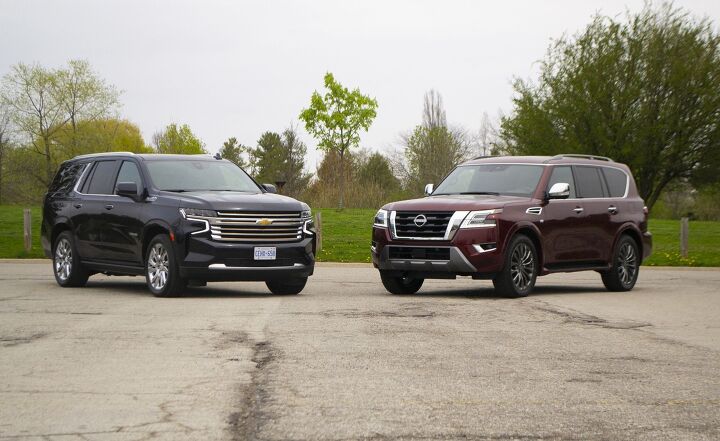






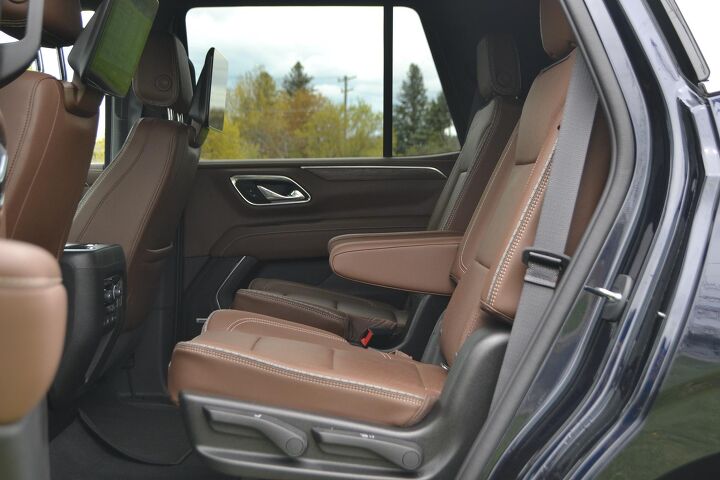



























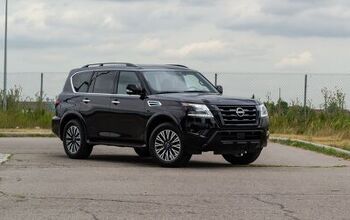

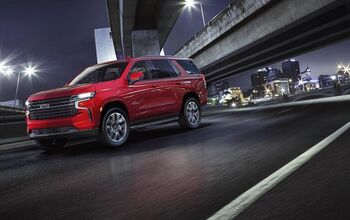
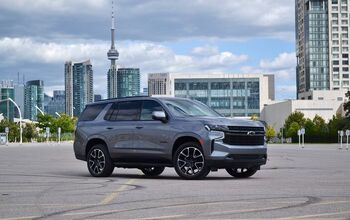


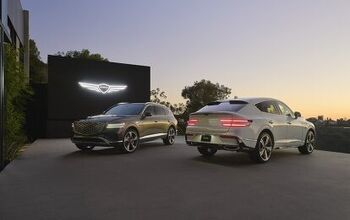
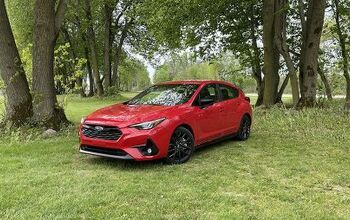
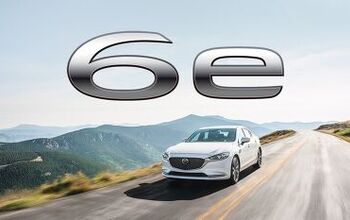
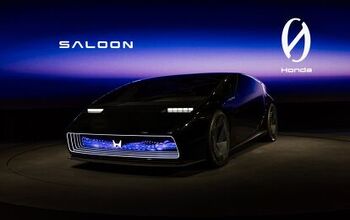
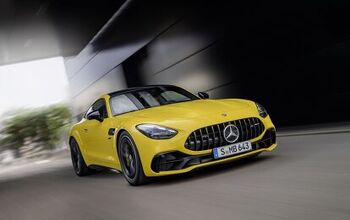
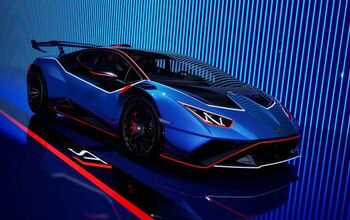
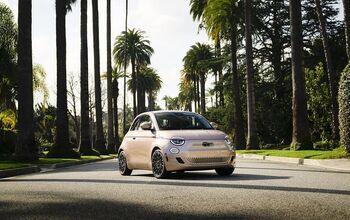
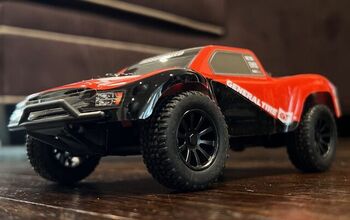
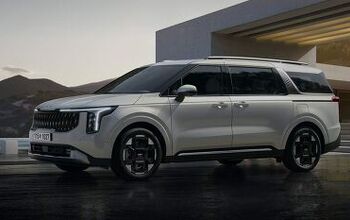
Comments
Join the conversation
Tahoe is better then Nissan, Even Nissan Patrol is better then tahoe. If you are want to compare then tahoe vs gmc is better.